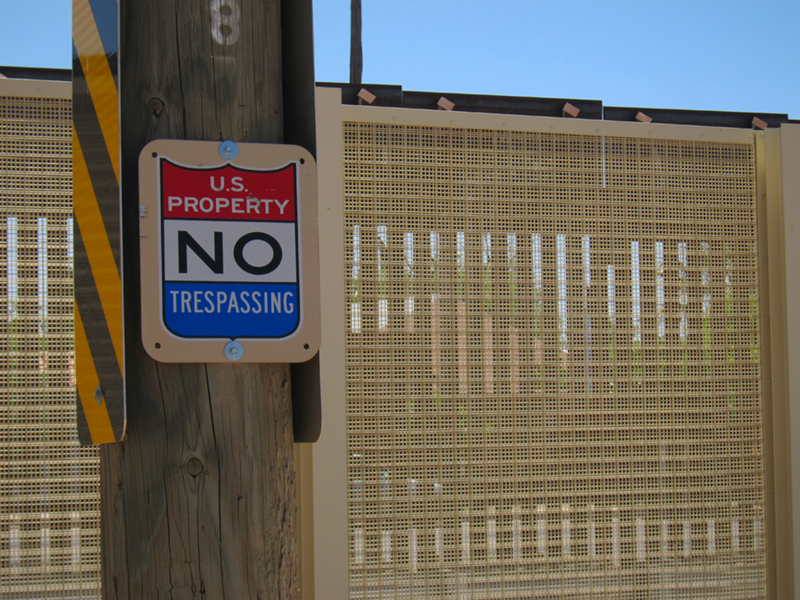ICE Leadership Furthers the Effort to ‘Abolish ICE’
The “Abolish ICE” movement that gained momentum in the summer of 2018 has gained new life, thanks to an unlikely source: Patrick J. Lechleitner, ICE’s acting director, who is “rebranding” the agency’s Homeland Security Investigations (HSI) bureau by stripping it of any association with ICE to better enable HSI agents “to work without the undue toxicity that in some places comes with the ICE moniker”. Left unsaid is the fact that Lechleitner’s actions play into that toxicity. Neither HSI nor DHS for that matter was created to chase monkey smugglers or repatriate Bronze-Age antiquities — it exists to enforce the immigration laws, a job the directorate now prefers not to be associated with.
INS and the Homeland Security Act of 2002. Prior to March 1, 2003, all immigration enforcement in the United States fell under the jurisdiction of the then-Immigration and Naturalization Service (INS), an agency that also processed and adjudicated applications for immigration benefits.
That included immigration enforcement at the border, at the ports of entry, and in the interior of the United States.
Immigration inspectors manned the ports and Border Patrol agents protected the coastal and land borders, while in the interior special agents and investigators in the investigations program worked with detention and deportation officers to arrest, detain, and deport removable aliens; and to perform worksite and immigration fraud investigations.
For reasons I have explained in-depth elsewhere, that old INS structure received a massive shake-up in the wake of the terrorist attacks of September 11, 2001, largely governed by the creation of the new DHS.
In early June 2002, then-President George W. Bush issued a framework to create a new Department of Homeland Security, which he described as “the most significant transformation of the U.S. government in over a half-century by largely transforming and realigning the current confusing patchwork of government activities into a single department whose primary mission is to protect our homeland”.
On June 24, 2002, then-House Majority Leader Dick Armey (R-Texas) introduced H.R. 5005, the “Homeland Security Act (HSA), with 113 initial cosponsors. (Reps. Adam Schiff (D-Calif.) and Mike Pence (R-Ind.) signed on as cosponsors two weeks later.)
Thirty-two days after it was introduced, the HSA cleared 12 separate committees and passed the House by a vote of 295 to 132. Things took a bit longer to get through the Senate, but nonetheless the bill was passed by the upper chamber on November 19, 2002, with 90 yeas and just nine nays.
Former Pennsylvania Gov. Tom Ridge was named DHS secretary on January 24, 2003, and INS was formally abolished on March 1, the new department’s formal birth date. Few were sad to see it go.
Section 441 of the HSA transferred the old INS enforcement functions — and critically the Border Patrol, port inspections, and detention and removal programs — to a new DHS undersecretary for border and transportation security. Section 442 created a “Bureau of Border Security” in which those enforcement functions would operate.
It’s almost quaint in retrospect to appreciate that paragraph 442(a)(5) of the HSA directed the new department to create a “managerial rotation program” allowing leadership employees in the bureau to “gain some experience in all the major functions performed by such bureau”. Border Patrol managers would get some time doing deportations, and investigators would slide down to the border and ports for a stint.
If you’ve never heard of the Bureau of Border Security, that’s okay — because it only ever existed on paper.
The Bush administration ignored all of it, and instead produced brand new agencies, ICE and CBP, with the interior enforcement activities of the Customs Service (specifically transferred to DHS under section 411 of the HSA) merged in with the old INS interior enforcement units to form ICE, and Customs, border, and port personnel thrown together with INS’s inspectors and Border Patrol agents to form CBP.
CBP got the better end of the deal, receiving most of the structure and authorities from the old Customs Service (and its flag). ICE meanwhile was built upon the old INS framework, which worked about as well as anyone who remembered INS would expect.
Notably, when I was a congressional staffer, I fielded complaints for years from former INS agents who complained the legacy Customs folks got all the good positions. You prioritize what you know, and for many higher-ups at the new ICE, they didn’t know much about immigration.
“Mission Creep”. “Mission creep”, the accretion of new and often contradictory duties in any bureaucratic structure, was identified as a critical failing of the old INS enforcement and adjudications structure. With due respect to the nameless bureaucrat (or team of nameless bureaucrats) who merged customs and immigration enforcement, mission creep was not only inevitable in the new agencies — it was baked in.
Things only got worse on that front in June 2010 when ICE underwent what the Congressional Research Service (CRS) has described as “a structural realignment”, including the creation of HSI (which “combined elements within ICE that focused on criminal investigation”) and Enforcement and Removal Operations or “ERO” (which “identifies and apprehends removable aliens, detains these individuals when necessary and removes illegal aliens from the United States”).
Here’s how CRS explained the “focus” of HSI in a November 2015 report:
Enforcing more than 400 federal laws and regulations, HSI investigates what it dubs as “cross-border criminal activity.” This suggests a host of responsibilities related to the illicit movement of people and goods into the United States. In addition to more obvious areas of operation such as drug trafficking, human smuggling, and visa security, HSI’s orbit of responsibilities also includes challenges such as cybercrime, intellectual property theft, and counterterrorism.
That’s not a “focus”, it’s a Jackson Pollock painting — but in any event HSI’s broad remit overlaps with authorities exercised by a number of other federal law enforcement agencies, not least of which is the FBI in the Department of Justice (DOJ).
“Negative Impacts”. Which brings me to a July 2019 report issued by the DHS and DOJ Inspectors General (IGs) titled “A Joint Review of Law Enforcement Cooperation on the Southwest Border between the Federal Bureau of Investigation and Homeland Security Investigations”.
In it, the IGs identified a number of instances in which the two components’ investigative authorities overlap, including child exploitation, commercial fraud, counter-proliferation, cybercrimes, narcotics, and transnational financial crimes.
Notwithstanding those overlapping authorities, the IGs reported that HSI and FBI are usually able to cooperate when conducting Southwest border criminal investigations. But they also noted that:
Over one-third of FBI and HSI survey respondents (363 of 980) reported cooperation failures that resulted in a range of negative impacts. Of those, 316 (87 percent of those that reported failures) reported that they had experienced at least 1 negative impact, including lost trust in the other agency or its personnel, unnecessary use of resources, unnecessarily prolonged investigations, and a failure to gather evidence or intelligence or apprehend a target. [Emphasis added.]
It should be noted that just a third — 33 percent — of the HSI agents interviewed reported at least one such failure to cooperate, while 46 percent of the FBI agents did, suggesting that the failure rate may have been higher had there been more FBI input.
“The Disparate Functions Performed by ERO and HSI”. In 2018, 19 HSI special agents in charge (SACs) sent an undated letter to then-DHS Secretary Kirstjen Nielsen, asking her “to restructure ICE into the two separate, independent entities of HSI and ERO”.
While that letter details various logistical challenges the current agency structure faces, the (likely) true reason for releasing that letter appears on the last of its four pages, which states:
The disparate functions performed by ERO and HSI often cause confusion among the public, the press, other law enforcement agencies and lawmakers because the two missions are not well understood and are erroneously combined. ERO’s administrative actions have been mistaken for illegal investigations and warrantless searches. HSl’s investigations have been perceived as targeting undocumented aliens, instead of the transnational criminal organizations that facilitate cross border crimes impacting our communities and national security. Furthermore, the perception of investigative independence is unnecessarily impacted by the political nature of civil immigration enforcement. Many jurisdictions continue to refuse to work with HSI because of a perceived linkage to the politics of civil immigration. Other jurisdictions agree to partner with HSI as long as the name is excluded from any public facing information. HSI is constantly expending resources to explain the organizational differences to state and local partners, as well as to Congressional staff, and even within our own department — DHS. [Emphasis added.]
In other words, immigration enforcement is like the gawky 12-year-old brother your Mom insists you take along when you and your high school friends are going to a movie/the beach/a party. Except here, instead of HSI’s kid brother, immigration enforcement is the main reason that the agency — and in fact, as I’ve explained previously, why the whole department — exists.
Not to be overlooked in discussing that mewling missive is the fact that among the 19 SACs who signed on was one “P.J. Lechleitner”, the then-SAC in Washington, D.C.
Now that Mom and Dad have left him alone to run the agency temporarily, he’s apparently decided to ditch his embarrassing sibling at home to take care of the unpleasant immigration functions while he and his special agent friends go investigate “international art” and “antiquity theft”, other overlapping authorities the IGs identified.
“Senate-Confirmed Professionals”. In his 2020 campaign’s immigration web page, then-candidate Joe Biden vowed that within 100 days of taking office, “Senate-confirmed professionals” would be leading both ICE and CBP. As Lechleitner’s temporary designation suggests, now-President Biden has failed to keep that promise.
In fact, the only reason Lechleitner has the job is that his predecessor, Tae Johnson, remained acting ICE director for so long that GAO’s general counsel had to get involved and tell the president in February 2023 that Johnson’s temporary appointment had run afoul of the Vacancies Act, which “generally limits the period of acting service to 210 days beginning on the date the vacancy occurs”.
This is not a gratuitous observation. Instead, among the reasons why Senate confirmation is important is that it ensures that a politically accountable individual is guiding the agency, and ideally fighting to achieve its mission and protect its prerogatives.
Here, Lechleitner is neither politically accountable nor — based on this HSI rebranding scheme — necessarily committed to the “immigration” part of Immigration and Customs Enforcement’s mission. That’s not to say that he isn’t a dedicated public servant (I’ve never met him), but his acting status is proof that immigration enforcement is “toxic” within this administration.
And even if the administration’s attitude isn’t to blame for the “toxicity” of immigration enforcement among many in the president’s base (even as increasing numbers of other voters view it as a palliative, not a poison), acts like this one won’t make it any more palatable to those on the far left.
Lechleiter’s announcement simply confirms to the Abolish ICE crowd that they have a point, that ICE enforcement is icky and noisome and best left to those who don’t sport the exclusive “special agent” badge.
Justice, Fairness, and Equity. Worse, its redolent of DHS Secretary Alejandro Mayorkas’ appeals at the U.S. Conference of Mayors in the winter of 2022, when he begged those chief magistrates to curb their cities’ sanctuary rules because, unlike Trump’s enforcement policies, Biden’s were tempered with “justice and fairness and equity”.
The only thing the secretary’s debasement of himself and his department did was reaffirm those mayors’ uninformed opinions that immigration enforcement is inherently unjust, unfair, and inequitable — which is more or less what the HSI effort rebranding does.
Of the 14 cabinet departments, DHS — again, created in the wake of September 11th — is the newest. The sole reason DHS exists is because Congress realized that immigration enforcement is key to our domestic security. Before it goes off chasing after monkey smugglers and repatriating “Greco-Roman helmets”, HSI and its leaders should ponder that fact.






